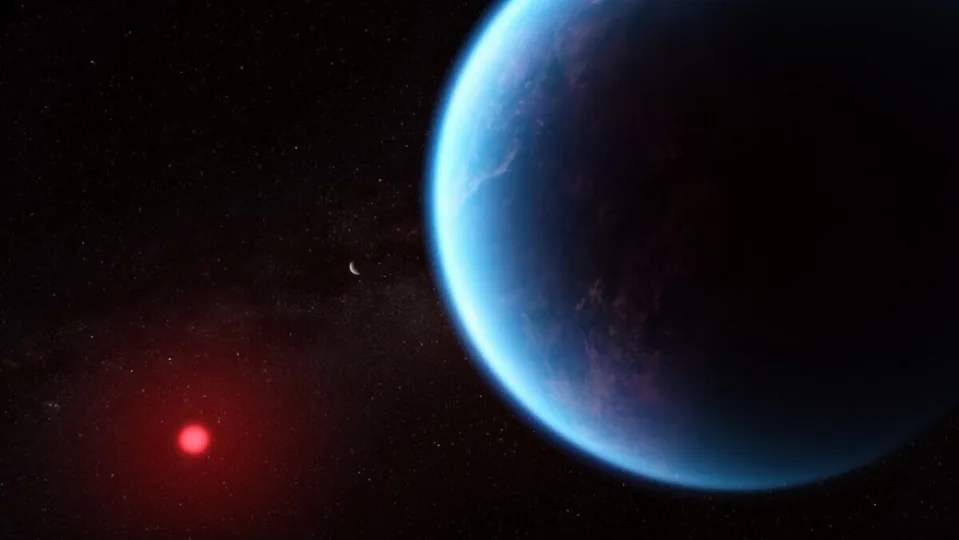While the James Webb Space Telescope was observing the atmosphere of an extraterrestrial world located 120 light-years away, it detected indications of a substance that is only produced by living organisms, at least on Earth.
This molecule, known as dimethyl sulfide, is primarily produced by phytoplankton, microscopic organisms similar to plants that inhabit both saltwater and freshwater environments.
The detection made by the James Webb, a powerful space-based infrared telescope managed by NASA and the European and Canadian space agencies, is part of new research on K2-18 b, an exoplanet nearly nine times the mass of Earth located in the Leo constellation.
The study has also found abundant carbon molecules, such as methane and carbon dioxide. This discovery supports previous research suggesting that the distant world has an atmosphere rich in hydrogen hanging above an ocean.
Planets of this type believed to exist in the universe are referred to as Hycean, combining the words “hydrogen” and “ocean.”
“This molecule (dimethyl sulfide) is unique to life on Earth: there is no other way for this molecule to be produced on Earth,” said astronomer Nikku Madhusudhan in a video from the University of Cambridge.
This doesn’t necessarily mean there is life beyond Earth… or it might
The scientists involved in the research caution that the evidence supporting the presence of dimethyl sulfide (DMS for short) is faint and “requires further validation,” according to a statement from the Space Telescope Science Institute.
Researchers use the James Webb to conduct atmospheric studies of exoplanets. Discoveries of water and methane, for example, important ingredients for life as we know it, could be indicators of possible habitability or biological activity.
The method employed by this team is called transmission spectroscopy. When planets pass in front of their host star, starlight filters through their atmospheres.
Molecules in the atmosphere absorb specific wavelengths or colors of light, so by splitting the starlight into its basic components, astronomers can detect which segments of light are missing to discern the molecular composition of an atmosphere.
According to Madhusudhan, it’s the first time that exoplanet hunters have found methane and hydrocarbons. This, coupled with the absence of molecules like ammonia and carbon monoxide, makes for an intriguing mix in an atmosphere.
“In all possible explanations, the most plausible one is that there’s an ocean underneath,” he stated.
K2-18 b orbits around a cool dwarf star in the so-called “habitable zone,” the region around a host star where it’s neither too hot nor too cold for liquid water to exist on a planet’s surface. In our solar system, this zone encompasses Venus, Earth, and Mars.
Although K2-18 b is in the “Goldilocks zone,” this alone doesn’t mean the planet could support life. Researchers don’t know what the temperature of the water would be, so whether it’s habitable or not remains a mystery.


